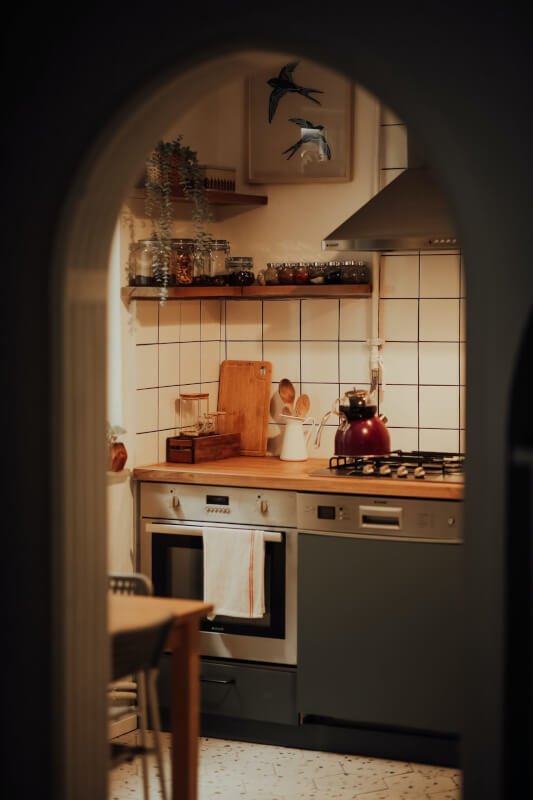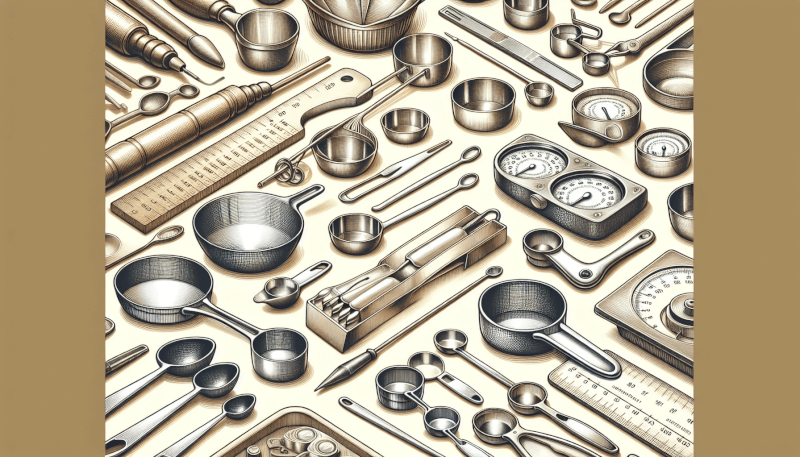In the world of cooking and baking, precise measurements are key to creating mouth-watering dishes. But with so many types of measuring cups and spoons available, it can be easy to get overwhelmed and confused. From traditional metal measuring cups to sleek silicone ones, and from standard measuring spoons to adjustable ones, there is a wide range of options to choose from. In this article, we will explore the various types of measuring cups and spoons, their unique features, and how to pick the right ones for your culinary adventures. So get ready to level up your measuring game and make your recipes sing with accuracy and precision!

Types of Measuring Cups
Standard Measuring Cups
Standard measuring cups are the most common type of measuring cups found in kitchens all over the world. These cups come in various sizes, such as 1 cup, 1/2 cup, 1/3 cup, and 1/4 cup. They are designed with a handle and a straight-sided shape, making it easy to level off ingredients for accurate measuring. Standard measuring cups are typically made of plastic, metal, or glass, and they are suitable for both dry and liquid ingredients.
When using standard measuring cups, it is important to fill the cup to the brim and then level off the excess using a straight edge, such as the back of a knife. This ensures that you have the exact amount of the ingredient you need. These cups are perfect for measuring flour, sugar, rice, and other dry ingredients that need to be leveled.
Pros
- Widely available and affordable.
- Suitable for measuring both dry and liquid ingredients.
- Easy to use and clean.
- Accurate measurements when leveled off properly.
Cons
- Some plastic cups may warp or fade over time.
- Glass cups can be fragile and break if mishandled.
Liquid Measuring Cups
Liquid measuring cups are specifically designed for measuring liquid ingredients accurately. These cups have a spout and a handle, making it easy to pour liquids without spills or messes. They come in different sizes, typically ranging from 1/4 cup to 2 cups, and are usually made of heat-resistant glass or plastic.
When using a liquid measuring cup, it is crucial to read the measurements at eye level, as the curved shape of the cup can affect the accuracy if not viewed correctly. It is also important to fill the cup to the desired line, rather than relying on the measuring lines etched on the side, to ensure precise measurements.
Pros
- Designed specifically for measuring liquids.
- Spout and handle make pouring easy.
- Available in various sizes.
- Accurate measurements when read at eye level.
Cons
- Limited to measuring liquids only.
- Can be fragile if made of glass.
Adjustable Measuring Cups
Adjustable measuring cups are a versatile option for accurately measuring both dry and liquid ingredients. These cups usually consist of a container with measurements marked on the side and a slide or adjuster that allows you to set the desired volume. By sliding the adjuster, you can easily measure various quantities without the need for multiple cups.
To use an adjustable measuring cup, you slide the adjuster to the desired measurement and then pour the ingredient into the container until it reaches the adjusted level. Adjusting the measurement is as simple as sliding the adjuster up or down, making it a quick and convenient option in the kitchen.
Pros
- Versatile for measuring different quantities without multiple cups.
- Suitable for both dry and liquid ingredients.
- Easy to use and adjust.
- Space-saving storage compared to multiple standard cups.
Cons
- Some models may be more expensive than traditional measuring cups.
- Adjuster may become loose over time and affect accuracy.
Nesting Measuring Cups
Nesting measuring cups are a set of measuring cups that conveniently fit into each other for compact storage. This type of measuring cup typically includes multiple cups ranging from 1/4 cup to 1 cup, each with a different size. They are usually made of plastic or metal and often come with a ring or clip that holds them together.
To use nesting measuring cups, you simply separate the cups and use the one that matches the required measurement. The remaining cups can be stored inside one another, saving valuable kitchen cabinet space. These cups are great for recipes that require multiple measurements simultaneously.
Pros
- Space-saving storage.
- Multiple measuring cups in one set.
- Available in various materials.
- Wide range of measurements in one set.
Cons
- May be less accurate for small measurements than single-size cups.
- Not suitable for measuring larger quantities.

Types of Measuring Spoons
Standard Measuring Spoons
Standard measuring spoons are essential tools for accurately measuring small quantities of dry or liquid ingredients. These spoons come in a set of four or five, usually ranging from 1/4 teaspoon to 1 tablespoon. They are typically made of metal or plastic and have a long handle with an oval-shaped spoon at the end.
When using standard measuring spoons, it is important to level off the ingredient using a straight edge, just like with standard measuring cups. These spoons are perfect for measuring ingredients like baking powder, salt, or vanilla extract.
Pros
- Commonly available and affordable.
- Suitable for measuring small quantities accurately.
- Easy to use and clean.
- Precise measurements when leveled off properly.
Cons
- Some plastic spoons may warp or fade over time.
- Metal spoons can get hot when used in hot liquids.
Adjustable Measuring Spoons
Adjustable measuring spoons are a handy option for measuring different quantities of ingredients without the need for multiple spoons. These spoons usually consist of a handle with an adjustable mechanism or a reversible design that allows you to set different measurements.
Using an adjustable measuring spoon is simple; you adjust the measure you need, scoop the ingredient, and level it off on the edge of the spoon. These spoons are great for recipes that require a range of measurements with minimal hassle.
Pros
- Versatile for measuring different quantities.
- Saves space compared to having multiple spoons.
- Easy to adjust and use.
- Suitable for both dry and liquid ingredients.
Cons
- May be more expensive than standard measuring spoons.
- Adjusting mechanism may become loose with extended use.
Long-Handled Measuring Spoons
Long-handled measuring spoons are distinguished by their extended handles, providing additional reach when measuring ingredients. These spoons typically come in a set of four, ranging from 1/4 teaspoon to 1 tablespoon, and are made of metal or plastic.
The longer handle of these measuring spoons makes it easier to reach into jars, containers, or deep bags of ingredients. They are especially useful when measuring ingredients like spices, powders, or liquids that need to be stirred while measuring.
Pros
- Longer handle for better reach.
- Suitable for measuring ingredients in tall containers or deep bags.
- Available in various materials.
- Accurate measurements for small quantities.
Cons
- May take up more space in the kitchen drawer.
- Not as necessary for everyday cooking if you already have standard measuring spoons.
Dash Measuring Spoons
Dash measuring spoons, also known as pinch or smidgen spoons, are used to measure very small quantities of ingredients. They usually come in a set of three, with measurements ranging from a smidgen, a pinch, and a dash. These spoons are typically made of metal and have short handles.
Dash measuring spoons are simple to use; you scoop the ingredient using the spoon and level off any excess on the edge. These spoons are perfect for measuring ingredients like spices, herbs, or flavorings that require minimal amounts.
Pros
- Ideal for measuring very small quantities.
- Suitable for spices and seasonings.
- Easy to use and clean.
- Precise measurements for small amounts.
Cons
- Limited to measuring very small quantities.
- Not necessary for all recipes, depending on your cooking preferences.



